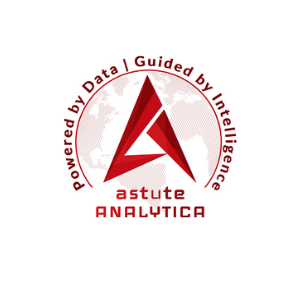Blockchain
EU Extends Crypto Travel Rules, Mandates Compliance in 6 Months

The European Union (EU) is intensifying its efforts to combat money laundering and terrorist financing through the imminent enforcement of Travel Rule guidelines for crypto-asset service providers (CASPs). Announced by the European Banking Authority (EBA), these guidelines will become mandatory for all crypto exchanges operating within the EU by December 30, 2024.
Crypto AML/CFT Rules for CASPs
The new EU guidelines represent a significant step in integrating crypto activities into the EU’s existing Anti-Money Laundering/Countering the Financing of Terrorism (AML/CFT) framework. Regulation (EU) 2023/1113, also known as the Travel Rule Guidelines, requires CASPs, as defined by the Markets in Crypto Assets (MiCA) regulation, to collect and report information on transfers of funds and digital assets.
Under these guidelines, CASPs must:
- Gather user data for transactions.
- Identify service-related purchases.
- Detect potentially suspicious transfers.
- Establish clear policies for handling multi-intermediated transactions and cross-border transfers.
The EBA acknowledges that achieving compliance may financially strain crypto exchanges and service providers. However, it expects the long-term benefits to outweigh the initial costs, stating, “These Guidelines are expected to contribute to making the fight against ML/TF more effective.”
Continuation of Existing AML/CFT Compliance
Crypto exchanges already subject to the EU’s existing Anti-Money Laundering Directive (AMLD) or similar domestic AML/CFT regimes will continue to operate under those regulations. The Travel Rule Guidelines add a layer of compliance specifically targeting digital assets transactions.
Cardano Meets MiCA Standards
As European governments tighten regulations, the crypto industry is taking proactive steps towards compliance. The Cardano Foundation, in collaboration with the Crypto Carbon Ratings Institute (CCRI), recently released sustainability indicators for the Cardano network that align with the upcoming MiCA regulation.
Cardano’s report highlights:
Its energy-efficient consensus mechanism, which significantly reduces electricity consumption compared to proof-of-work protocols.
The network’s total annualized energy consumption.
Its carbon footprint and marginal power demand per transaction.
This proactive stance from the crypto industry shows a willingness to collaborate with regulators and operate within a transparent and accountable framework. The December deadline for Travel Rule compliance will be a pivotal moment for the EU and the global crypto landscape, ushering in a new era of AML/CFT compliance for virtual assets transactions.
The EU’s enforcement of the Travel Rule guidelines marks a critical development in the regulation of crypto-asset service providers. While compliance may pose financial challenges for crypto exchanges and service providers, the EBA emphasizes the long-term benefits of a more effective fight against money laundering and terrorist financing. The crypto industry’s proactive measures, as demonstrated by Cardano’s alignment with MiCA standards, reflect a growing commitment to regulatory collaboration and transparency. As the December deadline approaches, the crypto sector is poised for a significant transformation towards enhanced AML/CFT compliance.
Source: coinspeaker.com
The post EU Extends Crypto Travel Rules, Mandates Compliance in 6 Months appeared first on HIPTHER Alerts.
Blockchain
Simplify Labs Expands Educational Outreach with Monthly Crypto Webinars
Blockchain
Blocks & Headlines: Today in Blockchain – May 21, 2025

In an era defined by rapid innovation and regulatory shifts, today’s blockchain briefing spotlights five pivotal developments: enterprise-grade data integration, municipal crypto pilots, state-level policy hearings, AI-powered token growth, and secure communications on a public ledger. Across these stories, three key trends emerge:
-
Enterprise Adoption & Data Integration
-
Government Experimentation & Oversight
-
AI & Security Innovations in Crypto
Below, we dissect each story’s essence, unpack its broader implications, and offer opinion-driven insight for Web3 stakeholders.
1. Space and Time Joins Forces with Microsoft Fabric
Source: Chainwire / The Defiant
On May 20, 2025, Space and Time Labs (SXT)—a zero-knowledge data platform backed by Microsoft’s M12 Ventures—announced integration of its multichain index (Bitcoin, Sui, Ethereum) into Microsoft Fabric’s OneLake environment. This partnership delivers real-time, verifiable blockchain data directly within Azure, enabling developers and enterprises to build data-driven Web3 and AI applications without custom pipelines.
Opinion: Embedding verifiable on-chain data into mainstream analytics tools marks a watershed moment. As traditional enterprises crave decentralized insights, Fabric’s native access to SXT’s ZK-proven data could accelerate blockchain analytics, foster hybrid cloud-Web3 solutions, and reduce vendor lock-in. Expect more legacy tech giants to pursue similar alliances.
2. New York City Eyes Crypto for Taxes & Records
Source: DL News
Mayor Eric Adams revealed plans to form a Digital Assets Advisory Council to explore crypto-based payments for municipal services, including taxes, birth/death certificates, and land records. While specifics remain under wraps, Adams highlighted zero-knowledge proofs as a privacy-preserving tool for public documentation on distributed ledgers.
Opinion: New York’s initiative signals growing municipal appetite for blockchain beyond investments. By potentially accepting tax payments in crypto and securing vital records on-chain, NYC could pioneer use cases that blend transparency with privacy. However, pilot programs must rigorously address volatility, regulatory compliance, and digital inclusion to avoid disenfranchising underserved communities.
3. Wyoming Committee Explores Blockchain, AI & Right-to-Repair
Source: Wyoming Public Media
During its first interim meeting (May 14–15, Jackson Hole), Wyoming’s Select Committee on Blockchain, Financial Technology and Digital Innovation reviewed the state’s proposed Wyoming Stable Token—tethered 1:1 to USD—and examined AI governance and right-to-repair legislation. The Stable Token Commission anticipates a July 4 alpha launch, while lawmakers debated CBDC distinctions, tokenized real-world assets, and consumer repair rights.
Opinion: Wyoming continues to cement its reputation as a blockchain haven. Explicit carve-outs distinguishing stablecoins from CBDCs, coupled with regulatory sandboxes for AI and repair laws, underscore a holistic approach to innovation. Other states should monitor Wyoming’s alpha testing outcomes to inform balanced policy frameworks that nurture Web3 while safeguarding consumer interests.
4. AI Tokens Surge in Crypto’s New Tango
Source: The Economic Times
Himanshi Lohchab reports that AI-centric utility tokens—built to autonomously execute services like compute renting (Render), predictive analytics (SingularityNET), and data marketplaces (Ocean Protocol)—have seen market caps soar from $2.7 billion to nearly $30 billion within a year. Key players include Near Protocol’s AI modules, ICP, The Graph, and emerging AI agents that generate revenue per usage. Institutional interest from Grayscale, BlackRock, and Fidelity further validates the trend.
Opinion: The AI-blockchain convergence is no fleeting fad. AI tokens promise programmable revenue streams and decentralized toolchains, but they also introduce autonomous risk vectors—buggy smart contracts, accountability gaps, and regulatory ambiguity. Security audits, standardized interoperability protocols, and clear legal frameworks will be crucial to sustain investor confidence.
5. BSV Association Selects Binarii Labs for Secure Communications
Source: CoinGeek (via PRNewswire)
The BSV Association has designated Binarii Labs to implement BinariiDSM, an encrypted file exchange and messaging suite that logs proofs of record on the BSV blockchain. This integration ensures immutable audit trails, data resilience, and end-to-end confidentiality for enterprises seeking verifiable trust without centralized intermediaries.
Opinion: As data privacy regulations tighten globally, blockchain-anchored communication platforms like BinariiDSM offer a compelling alternative to legacy VPNs and secure email. By immutably recording metadata on-chain, organizations can demonstrate compliance, simplify audits, and deter insider threats. Look for BSV’s secure-messaging model to inspire similar offerings on other smart-contract platforms.
Conclusion: Navigating a Dynamic Blockchain Frontier
Today’s stories reaffirm that blockchain is no longer an experimental niche—it’s permeating analytics, public services, legislative agendas, tokenomics, and secure communications. To thrive:
-
Forge Strategic Alliances: Enterprises should partner with ZK and data-fabric innovators to embed blockchain insights into their analytics stacks.
-
Pilot Pragmatically: Municipalities must balance visionary crypto use cases with compliance, volatility management, and equitable access.
-
Craft Balanced Policy: States can emulate Wyoming’s sandbox approach—distinguishing stablecoins from CBDCs, while addressing AI and repair rights.
-
Secure the Autonomous Agent Era: As AI tokens multiply, enforce rigorous security audits and interoperability standards.
-
Leverage On-Chain Trust: Consider blockchain-anchored communications for immutable audit trails and enhanced data resilience.
By embracing these actions, organizations and policymakers can harness blockchain’s transformative power while mitigating emerging risks.
The post Blocks & Headlines: Today in Blockchain – May 21, 2025 appeared first on News, Events, Advertising Options.
Blockchain
Hair Transplant Market To Worth Over US$ 41.01 Billion By 2033 | Astute Analytica
-

 Blockchain7 days ago
Blockchain7 days agoBDM Digital Initiates Promising Dialogue with Stanford Law School in Pursuit of Strategic Partnerships in Silicon Valley
-

 Blockchain7 days ago
Blockchain7 days agoBlocks & Headlines: Today in Blockchain – May 15, 2025 (BTC’s Push, Pi Network Fund, Stablecoin Levers, JPM Pilot, OKX × Man City)
-
Blockchain7 days ago
Wen Acquisition Corp Announces the Pricing of $261,000,000 Initial Public Offering
-
Blockchain6 days ago
Mercurity Fintech’s Subsidiary Grows Cross-Border Business Advisory Services with New Asia-Pacific Healthcare Client Engagement
-

 Blockchain6 days ago
Blockchain6 days agoSaudi Arabia Loan Aggregator Market Report 2025: Retail Digital Payments Hit 70% as Tech Adoption Transforms Saudi Financial Services – Competition, Forecast & Opportunities to 2030
-

 Blockchain6 days ago
Blockchain6 days agoBlocks & Headlines: Today in Blockchain – May 16, 2025
-

 Blockchain Press Releases3 days ago
Blockchain Press Releases3 days agoCoinW Unveils Industry-First Futures Protection Program:Instant Refunds Designed to Safeguard Traders
-

 Blockchain7 days ago
Blockchain7 days agoHODL 2025 opens in Dubai, advancing the Emirates’ position as a global financial innovation hub





















